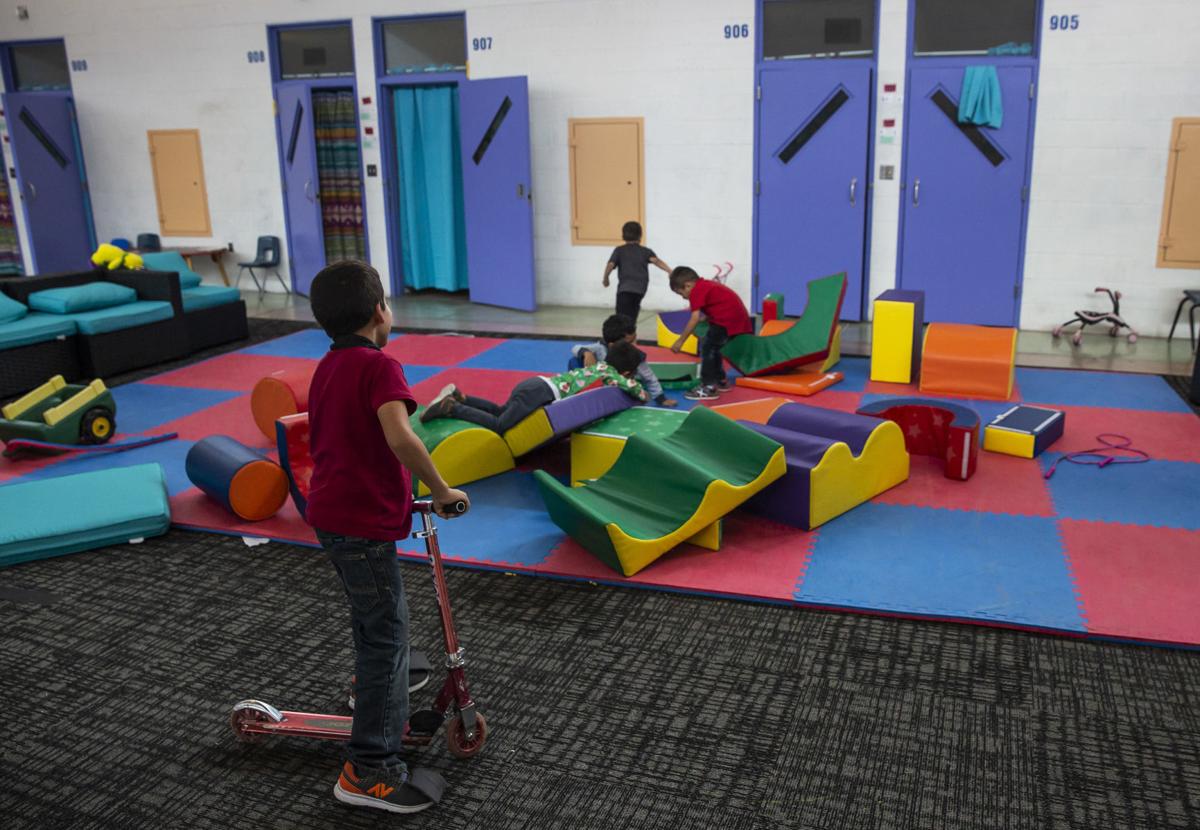Two months into operations of the Casa Alitas Welcome Center for migrant families seeking asylum, Pima County is still waiting to recoup the vast majority of its operating costs for the shelter.
The county has only received one grant worth $26,000 to help pay for operating costs of the shelter in the county’s former juvenile justice facility, Pima County Administrator Chuck Huckelbery told the Board of Supervisors in an Oct. 10 memo.
A $1.5 million grant remains outstanding, as does a request to use a portion of the Operation Stonegarden funding for humanitarian aid as allowed by federal regulations, according to the memo.
“It is disappointing that we have not heard more about our humanitarian aid grant using OPSG funding, since this request was submitted May 2019,” Huckelberry wrote.
Chief deputy county administrator Jan Lesher said she cannot elaborate on why it’s taking so long, but they are hoping to gain additional insight after a pair of visits within the next week — one from a delegation led by Congresswoman Ann Kirkpatrick and the other by Homeland Security staff.
Pima County opened the shelter in early August as a way to fill a need to temporarily house families seeking asylum after they’ve been processed and released by the Border Patrol and Immigrant and Customs Enforcement.
The shelter, which is run by volunteers from the Catholic Community Services of Southern Arizona, has housed roughly 86% of the 2,747 migrants released to the county in the period since it opened, according to Huckelberry’s memo.
About 98% of the migrants were a family of two or more. Roughly half of the total came from Guatemala. Migrants have stayed for an average stay of 3.4 days, according to the memo.
The director of the program, Teresa Cavendish, said the first two months have been a “success,” largely because of the space.
She did acknowledge there have been some general security concerns that she attributed to their “cautious nature.”
In terms of the space, Casa Alitas has found a home at the facility. They previously moved around to meet the needs of the program, starting in a bus station and classroom, before moving to two houses, and eventually settling into a monastery as demand grew exponentially earlier this year.
“It’s actually been very good for us since we know that we will be here for an extended period of time we are able to invest an effort to expand the infrastructure to make it a very attractive and welcoming building,” she said. “It looks like we’ve been here a great deal longer.”
Casa Alitas has always been funded through donations and volunteers. The county handles all the costs associated with the building.
But Cavendish said they’re still hoping that grant funding will come in.
“We want the county to be successful,” she said. “We believe this is the type of program that should be funded by the government in some way.”
Huckelberry previously said he hoped to recoup roughly $530,000 in federal grants of offset the operating costs of the shelter during the first five months of operation.
The county has stayed within that estimate, as costs have been about $90,000 a month in the first two months for food, utilities, janitorial services and labor for meal preparation, according to deputy county administrator Francisco Garcia.
While that per-month total puts the county on pace to pay $450,000 in the five months, the remaining $80,000 accounts for improvement costs to the juvenile jail facility prior to the August opening, Garcia said.
“I think that was still a good estimate,” Garcia said. “We’ll see how it all shakes out.”
Garcia said the $26,000 award was a one-time FEMA grant that will be used to help cover those monthly costs.
The county also received another $88,000 to help offset the costs associated with the pop-up shelters it used from January through June, which included the expenditures of providing vaccinations. The county asked for $119,000.
In the meantime, the funding for the shelter is being paid from the facilities fund, Garcia said.
He added that the county is going to keep pushing to recoup that money.
“You’re going to see us be aggressive because we feel this (program) is appropriate and right,” he said.





